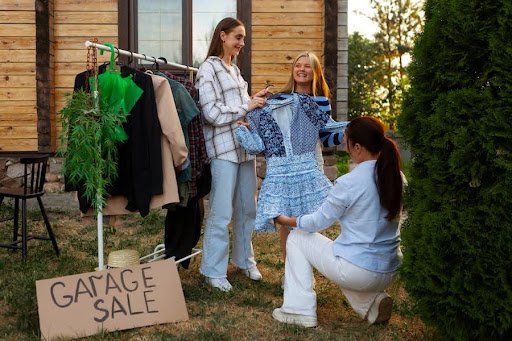Many times, Eid dresses feature meticulously chosen and elegantly made attire to commemorate the holiday. Although these clothes are especially meaningful at the holiday, their adaptability makes them ideal for other occasions, therefore extending their lifespan and lowering clothing waste. With imaginative accessories, layering, or mixing separates, a well-styled Eid Outfit can be customised from weddings to formal events to produce new appearances. This method gives inexpensive design ideas that encourage sustainable fashion. Eight straightforward methods to repurpose these clothes for various events are covered in this guide so that they stay a treasured component of your wardrobe beyond the celebrations.
Wedding Guest Dress
A lavish Eid dresses, such as a decorated kurta or a beaded abaya, can be easily utilised as a wedding guest dress. Swinging a highly decorated dress with statement accessories and shoes makes the outfit look better for women at a formal gathering. Brocade stole or dress shoes can make men wear a well-fitted sherwani or a new kurta. For day weddings, lightweight fabric such as silk or chiffon is perfect; for evening receptions, luxurious fabrics such as velvet are appropriate. A simple shift in accessories, such as a classic dupatta to a chic clutch—the outfit takes on a new gravitas. In this manner, the outfit receives several wears without disappointing and also saves you money.
Cultural or Themed Functions
Eid wear naturally suits heritage days, themed parties, or cultural events. Worn with pride to multiculturals, a traditional sharara or sherwani in brocade brings to mind fine workmanship. While the latter can be paired with jeans by men for a modern look, women can try layering, i.e., layering a denim jacket over a kurta for fusion clothing. The same attire can be worn on Diwali celebrations, Ramadan markets, or even South Asian weddings. The concept is to keep the fine details of the attire at the centre stage and accessorise as per the theme of the occasion. Upcycling Eid wear for events is a way of holding on to cultural pride without having to make additional purchases.
Wear for a Casual Day Out
Casual affairs require subdued Eid gowns. Crossbody bag and flipflops can be paired with a simple kurta of cotton or a light-colored maxi dress for casual wear. Men can pair chinos with a simple kurta, and women can pair a short kurta with jeans or leggings. Light fabrics like linen are comfortable; light prints are stylish. Adding sunhats or sunglasses can even informalize the look. This approach, except for special occasions, makes Eid dresses tougher so that they are suitable for brunches, shopping outings, or meetups with family with plain élan.
Festival Holiday Wear
Wear your outfit on other special occasions such as Christmas, New Year, or Thanksgiving. Velvet long formal dress or silk kurta in deep jewel colours (ruby, emerald, or gold) are ideal to wear during winter. Metallic lustre or faux-fur shawls can be accessorised by women and embroidered waist coats by men. Sparkly clutches or brogues will give the final touch to the festive attire. Few cultural trends mean the dressing fits so effortlessly into world holiday celebrations. This reuse plan avoids occasion attire from being used only once yearly.
Dinner Party or Anniversary Dress
An Eid dresses for festive occasions can be used to usher in dinner or anniversary celebrations.
Lace sari or elegant kurta with highly detailed handiwork is the ultimate in sophistication. It can be matched up with a clutch and sandals by women, and men can wear a narrow bandhgala with formal shoes. Drape material or middle emphasis in the way of a pocket watch adds sophistication. Restaurant meals with low lighting emphasise the rich detail of the wearables, thus making it ideal for dinner dates. This reinterpretation is a celebration of how celebratory fashion can be timelessness and romantic in leaning.
Community or Charity Events
Eid dresses is extremely emotionally invested; therefore, it’s an odd choice for fundraising events or charity functions. A simple and sleek abaya or kurta, hand-embroidered, is a nod to heritage that pays forward. They can be paired with basic women’s accessories, or men can pair them with the white kurta of traditional style and look classy. Earthy colours or cause colours (like pink for cancer) can make the outfit relate to the cause of the event. This recycling in itself is a reflection of the ethic of gift, as is Eid.
Conclusion
Eid dresses is more versatile than it first seems.
Re-wearing it as wedding, office, cocktail party, or street wear, clothes like these have the potential for a life of multiple uses when put on. Flexible styling, clever accessorising, and consideration of fibre enables easy changes of use. Not only is this eco-friendly fashion, but it also glorifies the universal allure of cultural clothing. With a little creativity, your favourite Eid dresses can be dressed up for daily wear all year, demonstrating that innovative reuse can be stylish and convenient.


